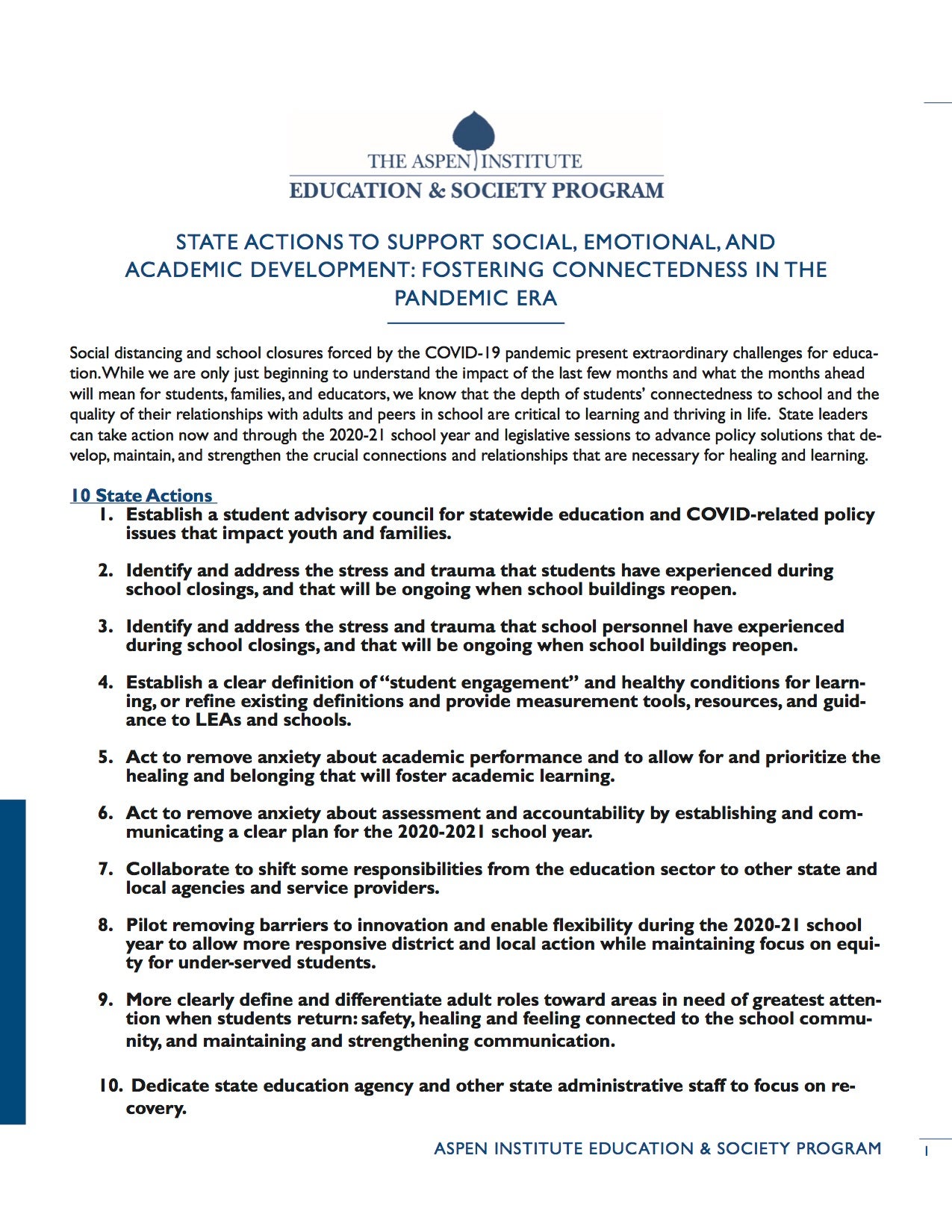Social distancing and school closures forced by the COVID-19 pandemic present extraordinary challenges for education. In the period of immediate crisis response, education leaders acted quickly to provide meals, digital devices, and help foster internet connectivity to meet urgent needs. While we are only just beginning to understand the impact of the last few months and what the months ahead will mean for students, families, and educators, we do know that the depth of students’ connectedness to school and the quality of their relationships with adults and peers in school are critical to learning and thriving in life. Nurturing relationships in school provide a buffer against stress and trauma. Routines like regular time for learning and eating meals are also a tool to build trust. Together, healthy relationships and routines undergird the development of resilience, which is needed to engage successfully in academics and in life beyond school. These dimensions of student well-being and readiness-to-learn are under tremendous strain due to the dislocation from routines and relationships brought about by school building closures, by growing unemployment, stress and uncertainty. Therefore, state leaders need to prioritize universal supports — as all students rely on schools for stability and safety — as well as specific strategies and supports for students who have experienced more acute stress and trauma.
State leaders can take action now and through the 2020-21 school year and legislative sessions to develop, maintain, and strengthen the crucial connections and relationships that are necessary for learning.
10 State Actions
- Establish a student advisory council for statewide education and COVID-related policy issues that impact youth and families.
- Identify and address the stress and trauma that students have experienced during school closings, and that will be ongoing when school buildings reopen.
- Identify and address the stress and trauma that school personnel have experienced during school closings, and that will be ongoing when school buildings reopen.
- Establish a clear definition of “student engagement” and healthy conditions for learning, or refine existing definitions and provide measurement tools, resources, and guidance to LEAs and schools.
- Act to remove anxiety about academic performance and to allow for and prioritize healing and belonging that will foster academic learning.
- Act to remove anxiety about assessment and accountability by establishing and communicating a clear plan for the 2020-2021 school year.
- Collaborate to shift some responsibilities from the education sector to other state and local agencies and service providers.
- Pilot removing barriers to innovation and to enable flexibility during the 2020-21 school year to allow more responsive district and local action while maintaining focus on equity for under-served students.
- More clearly define and differentiate adult roles toward areas in need of greatest attention when students return: safety, healing and feeling connected to the school community, and maintaining and strengthening communication.
- Dedicate state education agency and other state administrative staff to focus on recovery.
These recommendations were developed by the Aspen Institute Education & Society Program, informed by a diverse group of education leaders that included students, families, advocates, district leaders, state chiefs, researchers, think tanks, funders, and policymakers convened on April 29, 2020. This resource is designed to help state education leaders identify potential actions focused on fostering social and emotional development and school connectedness and is not intended to offer one-size-fits-all recommendations.
Additional recommendations will address longer-term changes to support student connectedness and engagement with school, and strategies to related to academics, assessment and accountability.


